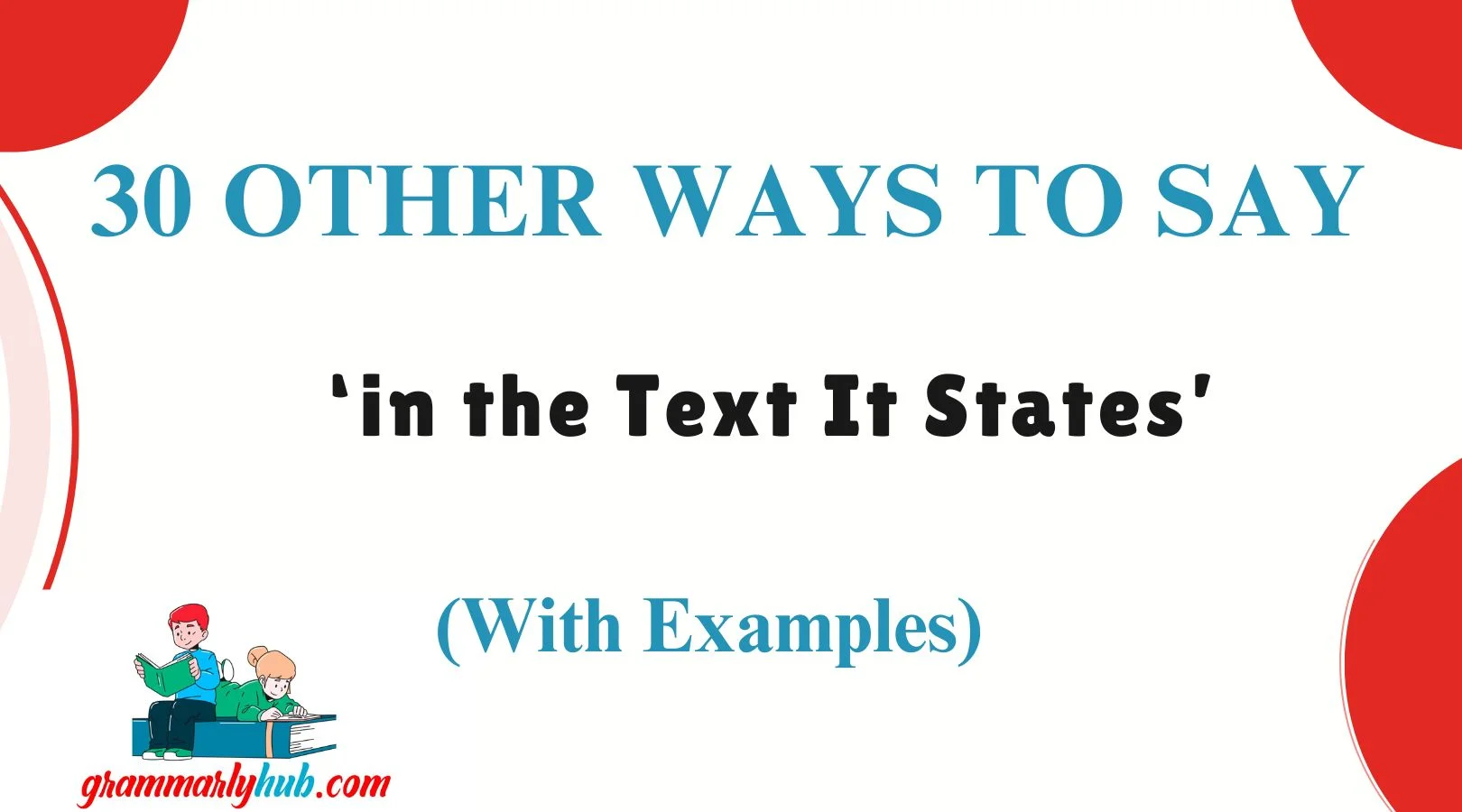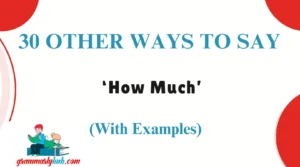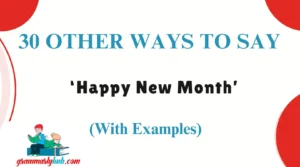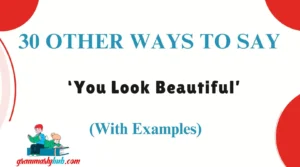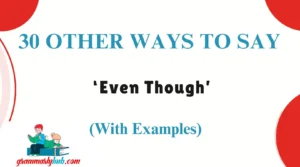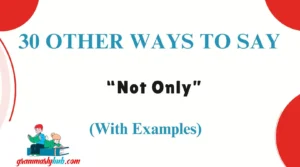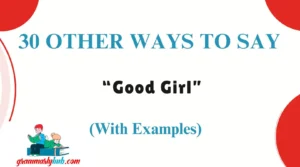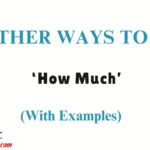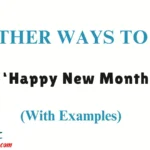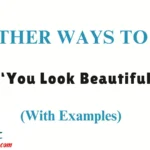When analysing a passage or sharing findings, the phrase “in the text it states” can feel repetitive or bland. By choosing more precise or engaging alternatives, you can connect more deeply with your audience and enhance the clarity of your writing. Whether you’re crafting an academic essay, delivering a presentation, or writing a report, these 30 alternatives will help you vary your language, maintain reader interest, and convey your points with warmth and confidence.
What Does “in the Text It States” Mean?
“In the text it states” is a signal phrase used to introduce a direct or paraphrased quotation or information from a written source. It tells your reader that the upcoming content originates from the text itself rather than your own ideas.
When to Use “in the Text It States”
Use this phrase when you want to attribute information directly to a source, ensuring proper academic or professional citation. It’s ideal for essays, research papers, reports, and any context where verifying evidence is crucial.
Is It Professional/Polite to Say “in the Text It States”?
Yes—this phrase is both professional and neutral, making it suitable for formal writing. However, overuse can make your prose feel mechanical; that’s where synonyms come in to refresh your style.
Pros and Cons of “in the Text It States”
Pros:
- Clear attribution to the source.
- Maintains a formal tone.
- Universally understood in academic and professional contexts.
Cons:
- Can become repetitive if used repeatedly.
- Lacks variety and may reduce reader engagement.
- May sound stilted in more conversational or creative writing.
Synonyms For “in the Text It States
- As stated in the text
- According to the text
- The passage indicates
- The text reveals
- The author writes
- The document reports
- The text specifies
- The text highlights
- The text asserts
- The text declares
- As per the text
- The text outlines
- The text describes
- The text mentions
- The text communicates
- The text conveys
- The text discloses
- The text portrays
- The text emphasizes
- The text observes
- The text remarks
- Textual evidence shows
- The narrative states
- The article notes
- The manuscript indicates
- The paper states
- The account details
- The excerpt reads
- The record mentions
- The source indicates
1. As Stated in the Text
Definition: A direct way to attribute information.
Explanation: Highlights that you’re quoting or paraphrasing exactly what the text says.
Example: As stated in the text, the company experienced a 25% growth last quarter.
Worst Use: Using it for informal blog posts where a more conversational tone is preferred.
Tone: Formal, clear, straightforward.
2. According to the Text
Definition: Indicates that the information follows the source exactly.
Explanation: “According to” is versatile and widely accepted in both formal and semi-formal writing.
Example: According to the text, renewable energy adoption has doubled in five years.
Worst Use: In creative writing where a more vivid verb would be engaging.
Tone: Neutral, informative, reliable.
3. The Passage Indicates
Definition: Suggests the text implies or demonstrates something.
Explanation: Good for interpreting or drawing conclusions from a segment of text.
Example: The passage indicates that social media influences consumer behavior.
Worst Use: When there’s no room for interpretation—stick to direct reporting.
Tone: Analytical, insightful, precise.
4. The Text Reveals
Definition: Emphasizes uncovering facts or insights.
Explanation: Adds a sense of discovery to the information you’re sharing.
Example: The text reveals a hidden bias in the study’s methodology.
Worst Use: If it’s a straightforward, non-surprising detail.
Tone: Engaging, curious, inspective.
5. The Author Writes
Definition: Attributes the information to the author directly.
Explanation: Useful when focusing on authorial voice or perspective.
Example: The author writes that climate change is accelerating faster than predicted.
Worst Use: When the author’s identity isn’t important to the point being made.
Tone: Credible, authoritative, respectful.
6. The Document Reports
Definition: Conveys that the information comes from a report or official document.
Explanation: Best for formal reports, white papers, and policy documents.
Example: The document reports a significant decrease in crime rates citywide.
Worst Use: In casual writing where “the study shows” would suffice.
Tone: Formal, official, trustworthy.
7. The Text Specifies
Definition: Highlights that the text gives exact details.
Explanation: Ideal for emphasizing precise data, dates, or facts.
Example: The text specifies that the deadline is September 30th.
Worst Use: When details are vague or implied rather than clearly stated.
Tone: Exact, detailed, unambiguous.
8. The Text Highlights
Definition: Indicates key points or emphasis in the text.
Explanation: Useful for drawing attention to the most important information.
Example: The text highlights the need for early childhood education initiatives.
Worst Use: If nothing in the text actually stands out as particularly important.
Tone: Emphatic, focused, insightful.
9. The Text Asserts
Definition: Conveys a strong statement or claim made by the text.
Explanation: Use when the text takes a firm position or stance.
Example: The text asserts that universal healthcare improves overall well-being.
Worst Use: For tentative or speculative statements that lack conviction.
Tone: Confident, assertive, forceful.
10. The Text Declares
Definition: Emphasizes a formal or official announcement within the text.
Explanation: Ideal for proclamations, mission statements, or formal reports.
Example: The text declares the initiative a success.
Worst Use: When the tone of the original text is informal or understated.
Tone: Formal, ceremonial, definitive.
11. As Per the Text
Definition: A slightly more formal variation of “according to the text.”
Explanation: Best for academic or legal writing.
Example: As per the text, all participants must sign a consent form.
Worst Use: In casual or conversational contexts—sounds too stiff.
Tone: Formal, precise, legalistic.
12. The Text Outlines
Definition: Indicates that the text provides a structured overview or plan.
Explanation: Great for summarizing frameworks, methodologies, or agendas.
Example: The text outlines five key strategies for market expansion.
Worst Use: When the text is descriptive rather than organized in an outline form.
Tone: Organized, systematic, clear.
13. The Text Describes
Definition: Shows that the text offers a detailed depiction of something.
Explanation: Useful for conveying sensory details, processes, or characteristics.
Example: The text describes the ceremony in vivid detail.
Worst Use: When referring to numerical data or statistics.
Tone: Descriptive, vivid, immersive.
14. The Text Mentions
Definition: A neutral way to indicate a brief reference.
Explanation: Best for side notes, minor details, or brief acknowledgments.
Example: The text mentions that supplemental readings are available online.
Worst Use: For primary arguments or major points—it understates importance.
Tone: Casual, neutral, concise.
15. The Text Communicates
Definition: Conveys that the text sends or imparts information.
Explanation: Implies clarity and intentional messaging.
Example: The text communicates the urgency of the climate crisis.
Worst Use: When the message is ambiguous or poorly defined.
Tone: Clear, purposeful, direct.
16. The Text Conveys
Definition: Highlights the overall message or feeling expressed.
Explanation: Useful for discussing tone, mood, or underlying themes.
Example: The text conveys a sense of optimism about the future.
Worst Use: When you need to focus on concrete facts rather than tone.
Tone: Nuanced, interpretive, artful.
17. The Text Discloses
Definition: Indicates revealing previously unknown information.
Explanation: Great for investigative reports or unveiling hidden findings.
Example: The text discloses key data that had been confidential.
Worst Use: For commonplace or already public information.
Tone: Revealing, dramatic, investigative.
18. The Text Portrays
Definition: Emphasizes depiction or characterization.
Explanation: Ideal for literary analysis or discussing character studies.
Example: The text portrays the protagonist as resilient and compassionate.
Worst Use: When referring to factual or statistical content.
Tone: Literary, analytical, evocative.
19. The Text Emphasizes
Definition: Shows that the text gives special importance to something.
Explanation: Good for pointing out repeated or highlighted ideas.
Example: The text emphasizes the importance of voter education.
Worst Use: When the idea is mentioned only in passing.
Tone: Strong, focused, urgent.
20. The Text Observes
Definition: Conveys a noted observation or comment.
Explanation: Subtly points out what the text notices.
Example: The text observes that many participants preferred the online format.
Worst Use: When the text doesn’t actually reflect an observation.
Tone: Objective, measured, thoughtful.
21. The Text Remarks
Definition: Indicates a brief commentary or side note.
Explanation: Best for parenthetical or supplemental comments within a text.
Example: The text remarks that further research is needed.
Worst Use: For central arguments or major data points.
Tone: Casual, conversational, light.
22. Textual Evidence Shows
Definition: Refers to direct proof found within the text.
Explanation: Emphasizes that you’re citing evidence to support a claim.
Example: Textual evidence shows that the author advocates for social justice.
Worst Use: When the link between text and claim is weak or interpretive.
Tone: Academic, evidential, supportive.
23. The Narrative States
Definition: Attributes information to the story or account being told.
Explanation: Ideal for discussing novels, biographies, or historical accounts.
Example: The narrative states that the hero traveled at dawn.
Worst Use: In technical or non-narrative texts.
Tone: Storytelling, descriptive, engaging.
24. The Article Notes
Definition: Points out observations made in an article.
Explanation: Useful for journalistic or blog-style sources.
Example: The article notes a significant rise in remote work trends.
Worst Use: When the source is a book chapter or non-article format.
Tone: Informative, observational, journalistic.
25. The Manuscript Indicates
Definition: Attributes information to a handwritten or draft document.
Explanation: Best for historical, archival, or unpublished sources.
Example: The manuscript indicates the recipe dates back to the 16th century.
Worst Use: For published articles or block-text sources.
Tone: Scholarly, historical, archival.
26. The Paper States
Definition: Refers to academic papers, theses, or dissertations.
Explanation: Ideal for scholarly contexts and research discussions.
Example: The paper states that dopamine levels affect decision-making.
Worst Use: When your source isn’t an academic paper.
Tone: Academic, formal, research-based.
27. The Account Details
Definition: Highlights a descriptive or chronological report.
Explanation: Good for eyewitness reports, case studies, or biographies.
Example: The account details how the expedition overcame extreme weather.
Worst Use: When information is summarized rather than detailed.
Tone: Descriptive, chronological, vivid.
28. The Excerpt Reads
Definition: Introduces a direct quotation from a selected passage.
Explanation: Best when you want to present an exact snippet of text.
Example: The excerpt reads: “We shall overcome adversity as one community.”
Worst Use: When paraphrasing rather than quoting directly.
Tone: Quoted, exact, precise.
29. The Record Mentions
Definition: Refers to official logs or documented entries.
Explanation: Ideal for historical records, meeting minutes, or transcripts.
Example: The record mentions that attendance was mandatory.
Worst Use: For informal or unpublished notes.
Tone: Official, archival, documentary.
30. The Source Indicates
Definition: Broad term for any origin of information.
Explanation: Flexible option when citing diverse materials.
Example: The source indicates a correlation between diet and mood.
Worst Use: When you have only one type of source and want specificity.
Tone: Neutral, versatile, reliable.
Conclusion
Mastering varied phrasing not only avoids repetition but also enhances readability and engages your audience. Each of these 30 alternatives to “in the text it states” allows you to tailor your tone—whether formal, analytical, descriptive, or conversational—to fit your context. By mixing and matching these expressions, your writing will feel more dynamic, precise, and thoughtfully crafted. Next time you cite evidence, choose the alternative that best captures the nuance of your source and watch your prose come alive.
Frequently Asked Questions (FAQs)
**What is a better way to say “in the text it states”?
Try using alternatives like** “According to the text,” “The author writes,” “The passage indicates,” or “The text reveals.” These phrases add variety and may better match the tone of your writing.
Is it okay to use “in the text it states” in academic writing?
Yes, it’s acceptable and clear, but you should vary your language to keep your writing engaging. Repeating the same phrase can come across as formulaic.
What is the difference between “the text states” and “the author writes”?
“The text states” focuses on the document or content, while “the author writes” highlights the person behind the words. Use the latter when discussing the author’s intent or perspective.
Can I use these alternatives in essays and reports?
Absolutely! These synonyms are suitable for academic essays, book analyses, business reports, and even presentations. Just choose the one that fits your tone and audience.
Which phrase is most formal?
Phrases like “As per the text,” “The document reports,” and “The source indicates” are among the most formal and work well in professional or academic settings.

Emma Brooke is the voice behind Grammarly Hub, where grammar meets clarity. With a deep passion for the written word, Emma helps readers navigate the tricky waters of English grammar, writing tips, and effective communication.
